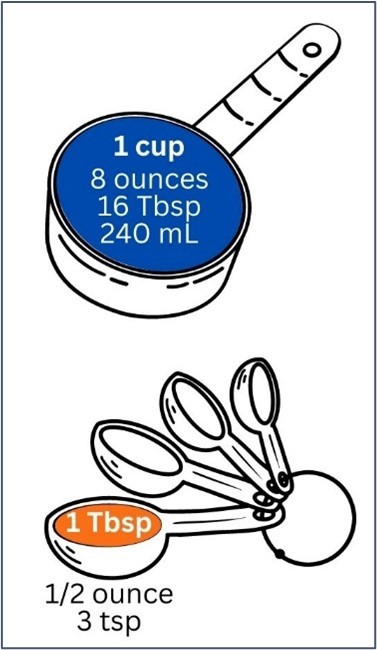It’s a common kitchen conundrum – you’re in the middle of a recipe and it calls for ingredients in cups, but your measuring tools are marked in ounces. Understanding liquid measurements is key in both cooking and baking, and it starts with knowing the basic conversions. So, how many ounces are in a cup? Let’s clear up the confusion right away.
Decoding the Cup to Ounce Conversion
The straightforward answer is: 1 cup is equal to 8 fluid ounces. This is a standard measurement in the United States customary units system for volume. To give you a broader picture, that single cup also translates to:
- 16 tablespoons (Tbsp)
- 48 teaspoons (tsp)
- Approximately 240 milliliters (mL)
These conversions are incredibly useful when you need to adjust recipes or use different measuring tools. Knowing that 8 ounces make up a cup is your starting point for navigating kitchen measurements with ease.
The Story Behind Kitchen Measurements: From Teacups to Standard Units
Have you ever wondered why we use cups and ounces in the first place? Historically, people measured ingredients using everyday items like cups and spoons. Of course, a “cup” could vary greatly in size from household to household! Over time, there was a need to standardize these measurements to ensure recipes were consistent and reliable. This standardization led to the measuring cups and spoons we use today.
In contrast to home kitchens, scientific environments like research labs take a different approach. Scientists rely on scales and balances for measuring solids, and precise tools like syringes, pipettes, graduated cylinders, and flasks for liquids. You won’t find them using cups or spoons in a lab! This difference highlights how measurement needs are adapted to the context – approximate volumes for cooking versus highly precise volumes in scientific experiments.
Baking, Chemistry, and Why Accuracy Matters
Believe it or not, baking is a form of chemistry! Just like in a lab, you’re combining ingredients – the ‘reagents’ of the kitchen – and causing chemical reactions to create something new, like delicious cookies.
Accuracy in measurements is crucial, especially in baking. Take baking soda, for example. Too much, and your cookies will taste off. Too little, and they won’t rise properly, resulting in dense cookies. While you might get away with adding extra chocolate chips without precise measurement, key ingredients like baking soda require accuracy. This principle of accurate measurement is amplified in scientific research, where even slight variations can lead to failed experiments or even dangerous outcomes. Scientists meticulously measure reagents to ensure reactions occur as expected.
So, next time you’re baking, remember the conversion: 8 ounces in a cup. And appreciate the underlying chemistry and the importance of accurate measurements in creating your culinary delights!
